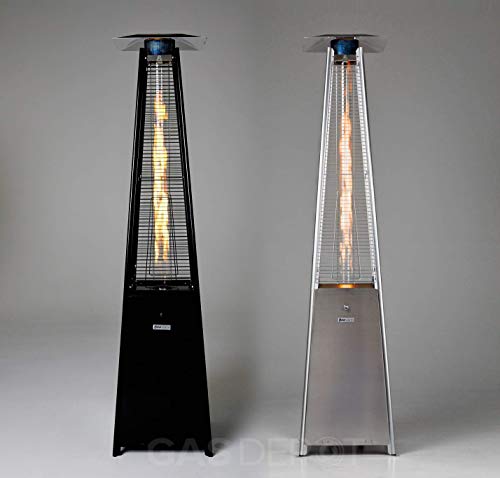Cheap Patio Gas Heaters
Patio heaters are available in a variety of designs and sizes. Some are electric hardwired and require professional installation while others use propane or natural gas to heat your space.
Mobile gas cylinders come in a variety of sizes, from 5kg patio bottles up to 13kg propane cylinders. They can be used with conventional BBQs, mobile heaters and Ooni pizza ovens.
Cost

A patio gas heater can increase the value of your home or business and increase the number people who utilize your outdoor space. It's a much less expensive alternative to other outdoor heaters such as wood-burning firepits or propane heaters. A gas heater for the patio can also be used indoors to provide a cozy atmosphere during winter.
Costs for gas for patios vary based on the size and model of your appliance. For example, a 5kg bottle of gas for your patio will cost around PS28. This includes a 27mm clip-on regulator ** that works with the majority of barbecues and patio heaters. Some patio heaters may require an additional regulator.
A propane gas cylinder is the ideal choice for pizza ovens, and tabletop heaters. It is inexpensive and odorless. It is also easy to store and transport. The majority of propane-powered appliances are durable and safe. They are long-lasting and can last a long time. They are a great choice for businesses and homeowners who want to save money.
Propane is a clean burning eco-friendly fuel that can be used to cook, heat and for other uses. It is cheaper than electricity and has lower maintenance costs. It also is less affected by oil prices spike.
Efficiency
The use of gas patio heaters is a great method to heat up an outdoor space. They can produce powerful heat output and can quickly heat an area of up to 215ft2. Unlike electric heaters, they do not require installation and can be moved around easily. They can also be switched on and off with a remote control or timer. Certain models come with an automatic shutoff function that prevents accidental fires.
price of patio gas and propane are two options when it comes to choosing gas types. Both are LPG however, they differ in their boiling point and boiling speed, with butane being more frigid than propane. Butane, which is also known as "patio gas" is typically stored in green cylindrical containers. Propane is stored in red containers. Both kinds of gas are compatible with the majority of standard BBQs and patio heaters, and are readily available at many garden and home centers.
click through the following web page for patios are designed to fit snugly into your BBQ or heater and come in a range of sizes ranging from 5kg to 13kg. Some have an indicator to notify you when the gas level is low. They are compatible with regular BBQ regulators. You can save money by using butane instead of propane. Most appliances are able to be converted to run on either fuel.
Butane is a great choice for hot weather. It is perfect for BBQs, camping gas stoves and portable heaters. However, it's less effective in the winter months since it doesn't flow at low temperatures. It is a low-toxicity fuel with an extremely low carbon footprint. It is ideal for people who are concerned about their environmental impact.
It is crucial to follow the directions provided by the manufacturer when using an appliance for heating your patio with gas. This includes following the safety guidelines to avoid carbon monoxide poisoning, and making sure that the heater is not exposed to naked flames or extreme temperatures. Additionally, patio heaters must be installed in open areas that have adequate ventilation and should not be used indoors or in enclosed spaces.
Safety
When using propane gas for your patio or hearth, it is essential to be aware of some security concerns. These safety precautions include safe storage and handling, the use of Personal Protective Equipment, and establishing emergency procedures. For example, cylinders should be stored outdoors in a designated space away from sources of ignition and should not be moved. If there is a leak the gas must be shut off and the personnel evacuated. In addition the cylinders should be clearly labeled with their contents and supplier information. They should also have a valve that can be opened manually with no force.
